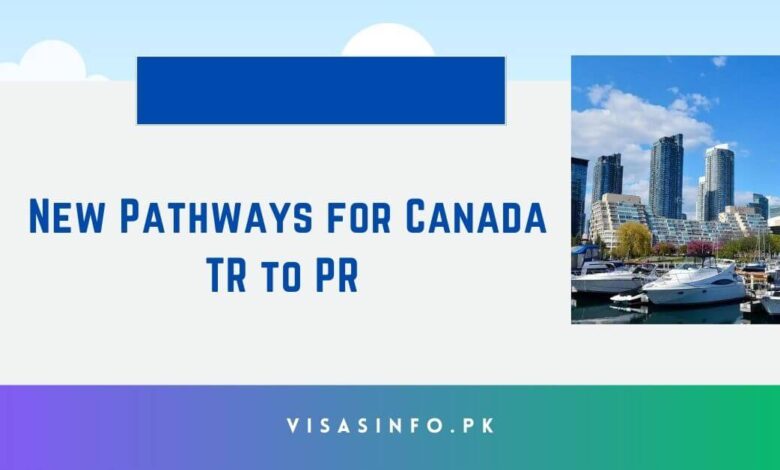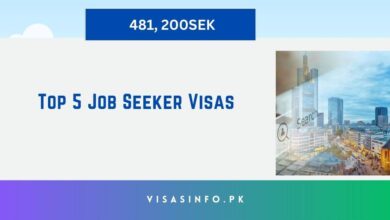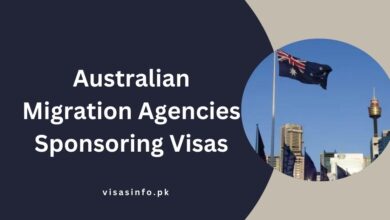New Pathways for Canada TR to PR 2024 – Visit Here

Moving from temporary residency to permanent settlement in Canada is a significant objective for a significant number of individuals who are seeking to begin a new chapter in their lives. The diverse culture, stunning landscapes, stable economy, and guarantee of a higher standard of living are the reasons why Canada is so appealing.
It becomes imperative for temporary residents who are pursuing a permanent foothold in Canada to navigate the intricate pathways to Canadian permanent residency (PR). This compendium offers a comprehensive examination of the Provincial Nominee Program, Canadian Experience Class, and Express Entry program through the examination of three straightforward and well-received Pathways. Each Avenue provides a unique opportunity for temporary visitors to seamlessly integrate into Canadian society.
Canada is a beacon for immigrants seeking a better life overseas, offering a rich culture, gorgeous landscapes, economic stability, and an enviable standard of living for temporary residents who aspire to relocate permanently. The transition to Permanent Residency (PR) offers numerous opportunities.
Canada Immigration has declared that the Temporary Resident to Permanent Resident (TR to PR) track will be closed in November 2021; however, alternative pathways remain accessible to foreign students and migrant laborers. In this blog, we investigate three straightforward and popular routes that transient residents can follow to become permanent residents of Canada.
Express Entry Program: Federal Skilled Worker Program
The Express Entry program, specifically the Federal Skilled Worker program, is a preferred pathway for qualified individuals to obtain permanent residency in Canada by utilizing the Comprehensive Ranking System (CRS). A points-based system is employed to evaluate candidates, which considers their adaptability, language proficiency, work experience, education, and age.
- To qualify, applicants must:
- First and foremost, possess a minimum of one year of continuous full-time or analogous part-time work experience in a skilled occupation within the past ten years.
- Additionally, obtaining an Educational Credential Assessment (ECA) upon the completion of a postsecondary degree that meets Canadian educational standards
- Furthermore, it is necessary to demonstrate your proficiency in either French or English through accredited language tests.
How it Works
- Create an Express Entry Profile: Before being admitted to the candidate pool, candidates must first create an account.
- CRS Assessment: Candidates are assessed according to their CRS score, which is determined by factors such as age, education, work experience, and language proficiency. In addition, variables such as the language proficiency of a spouse, work experience or education concluded in Canada, or a job offer are considered.
- Invitation to Apply (ITA): The Canadian government conducts frequent lotteries for individuals who have high CRS scores and are interested in obtaining permanent residency.
- Qualified applicants are required to furnish police clearance certificates and undergo a medical examination as part of the application process. Furthermore, they are required to demonstrate that they have sufficient financial resources to support their families during their initial period of residence in Canada.
- Confirmation of Permanent Residence (COPR): After the evaluation of their documentation, selected petitioners receive a confirmation.
Provincial Nominee Program (PNP)
Provincial Nominee Programs in Canada offer an alternative route for transient residents who aspire to become permanent residents. A PNP has been established in every Canadian province, except Quebec, to specifically address the labor market requirements of the region. Provinces can nominate individuals who have the requisite work experience and talents to bolster their local economies through these programs.
Prospective applicants should verify the specific eligibility requirements of the province to which they intend to apply, as province-specific eligibility requirements vary.
How it Works
Interested parties are required to apply to the province or territory in which they intend to reside.
Candidates are significantly more likely to be selected for permanent residence when they are nominated and receive a provincial nomination certificate.
Federal application: candidates submit an additional application to the federal government through either the Express Entry system or the non-Express Entry stream after being nominated.
The federal government considers the province nomination and the applicant’s likelihood of effectively relocating to the selected province or territory when determining whether to grant permanent residency.
Canadian Experience Class (CEC)
Designed for temporary residents with professional employment experience in Canada, the Canadian Experience Class (CEC) acknowledges the significance of individuals who have integrated into the country’s workforce, language, and culture. To qualify, candidates must satisfy the language proficiency requirements and possess a minimum of one year of full-time professional work experience in Canada.
How it Works
- Express Entry Profile: The CEC is a component of the system that facilitates expedited entry. By establishing an Express Entry profile, candidates verify their eligibility for the CEC CRS Assessment. Candidates are assigned a Comprehensive Ranking System (CRS) after their evaluation. tally Request for Applications (ITA): The Canadian government’s periodic lotteries are designed to encourage high-scoring applicants to submit applications for permanent residence.
Application Procedure: Candidates who are chosen must submit a police clearance certificate and complete a medical examination. - Advantages of Canada PR: Upon acceptance, applicants are granted permanent residency and are entitled to all associated benefits.
Note: The CEC program does not consider self-serving employment, job experience acquired while enrolled full-time, including cooperative work terms, or intentions to reside outside of Quebec. Quebec independently selects its qualified laborers.
Documents Required for Canada PR Application
- A valid passport The results of the language test The provincial nomination certificate, if applicable
- job offer letter from a Canadian employer
- Photographs for passports
- Evidence of funding
- Medical certification
It is commendable to desire to reside perpetually in Canada, and it is imperative to be aware of one’s options to transition from temporary to permanent status. The Provincial Nominee Program, Canadian Experience Class, and Express Entry programs all offer a variety of options to accommodate the unique requirements of each individual.
By utilizing these Pathways and ensuring that they are well informed about the eligibility requirements and application procedures, temporary residents can begin the process of achieving their Canadian goal. Temporary residents who are pursuing permanent residency in Canada are guided by these three Pathways, which assist them in achieving their objective of permanent residency.
New Opportunities, cultural integration, and a secure future can be accessed by individuals who successfully navigate the qualifying requirements and application procedures. The point-based Express Entry system, the localized focus of Provincial Nominee Programs, or the customized recognition of Canadian Experience Class—all of these routes hold significant potential.
Temporary residents can achieve their aspirations of permanent residency and establish an enduring connection to the diverse fabric of Canadian life by acquiring knowledge of four straightforward pathways.
Check Also: Canadian Employers Are Seeking Foreigners – LMIAs
Benefits of New Pathways for Canada TR to PR
- Enhanced Opportunities for Skilled Workers: New pathways frequently offer more transparent and accessible routes for skilled workers to transition from temporary to permanent residency, thereby assisting in the retention of talent that is already contributing to Canada’s economy.
- Canadian Experience Recognition: These pathways recognize and appreciate the skills and contributions of impermanent residents who have assimilated into Canadian society by concentrating on individuals with Canadian work or study experience.
- Enhanced Access for Essential Workers: Numerous new pathways incorporate provisions for essential workers, which can assist in addressing labor shortages in critical sectors and providing support to those who have played a critical role during difficult times.
- Streamlined Application Processes: New pathways may provide streamlined processes for individuals who meet specific criteria, thereby reducing complexity and facilitating the transition to PR for eligible applicants.
- Increased Flexibility: Certain pathways may provide alternative options or more flexible eligibility criteria for meeting the requirements for PR, thereby accommodating a broader range of qualifications and experiences.
- Incentives for Regional Settlement: Incentives for individuals to settle in regional or rural areas can be included in new pathways, which can assist in the resolution of population imbalances and the promotion of regional development.
- Greater Stability and Security: The transition to permanent residency in Canada offers individuals a greater sense of stability and long-term security, as well as access to a broader range of social benefits and opportunities for their family members.
- Family Reunification Assistance: Pathways may include provisions for family members, enabling temporary residents to bring their families to Canada and guaranteeing that they can remain together during the PR procedure.
- Economic Contributions: The government supports economic development and innovation by retaining skilled labor and providing clear pathways to PR for those already working in Canada.
- Enhanced Integration: Permanent residency provides a variety of long-term advantages, including the capacity to thoroughly integrate into Canadian society and access to Canadian healthcare and social services.
Frequently Asked Questions:
-
What’s the new route in Canada?
The new pathway seeks to have a streamlined approach that will promote faster implementation and meet the demands of the labor market in Canada. IRCC seeks to make these changes by fall 2024. Its goal is to address the ongoing labor shortages in industries that rely on TEER 4 and 5 workers.
-
Is TR-to-PR open again in Canada?
Although the TR to PR Pathway is no longer available, the journey from TR to PR remains open and accessible through a variety of other immigration programs. These current programs offer distinct advantages and cater to various circumstances.
-
Can I apply for PR while on TR?
Pathways from TR (485) to PR
Applying for your temporary graduate visa after your studies is always essential because most students will not be eligible to apply for permanent residency right after completing their studies.



